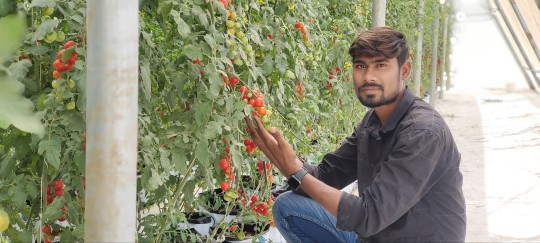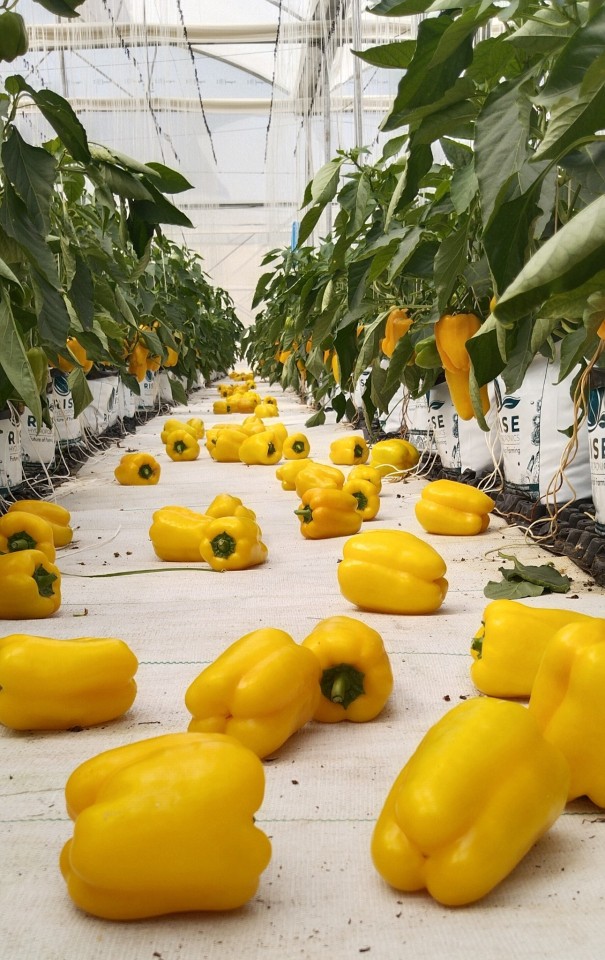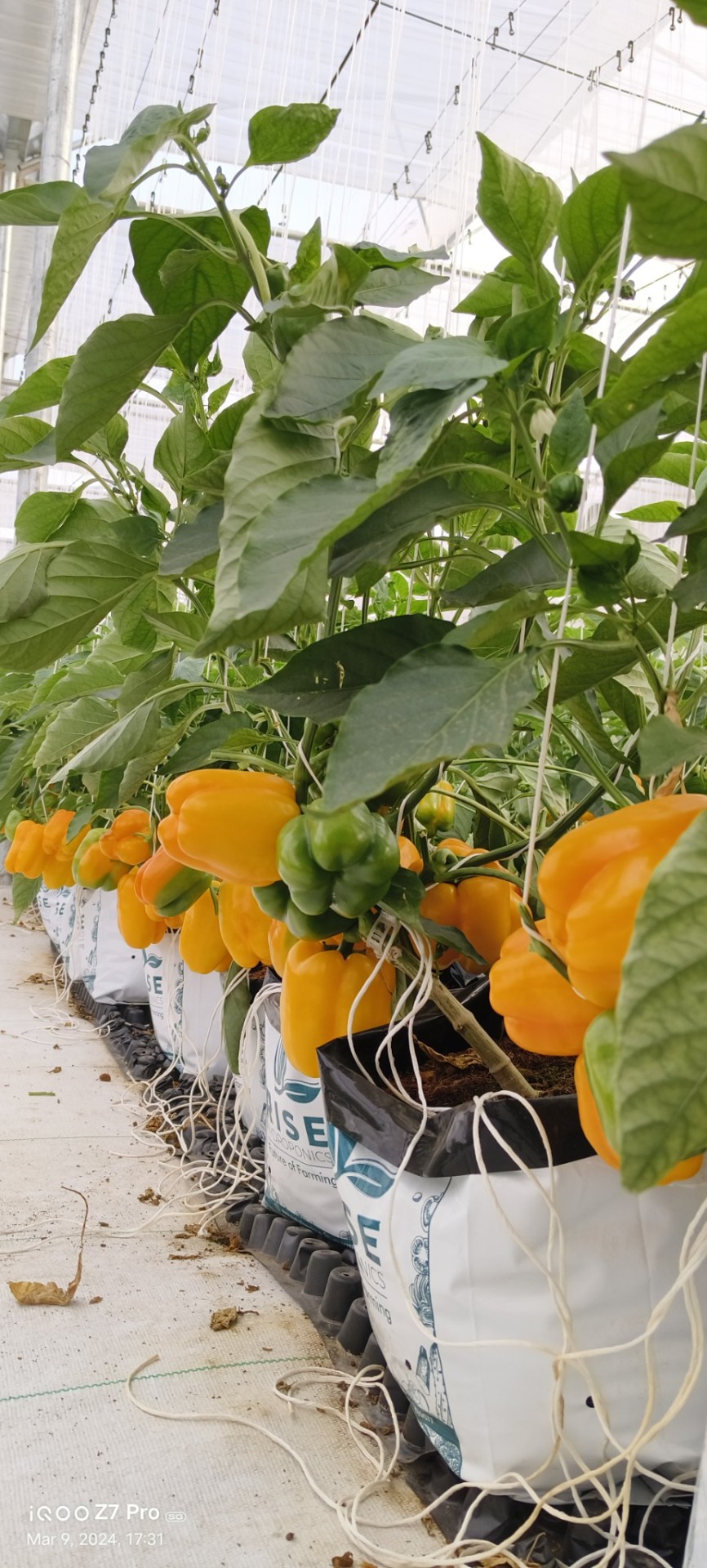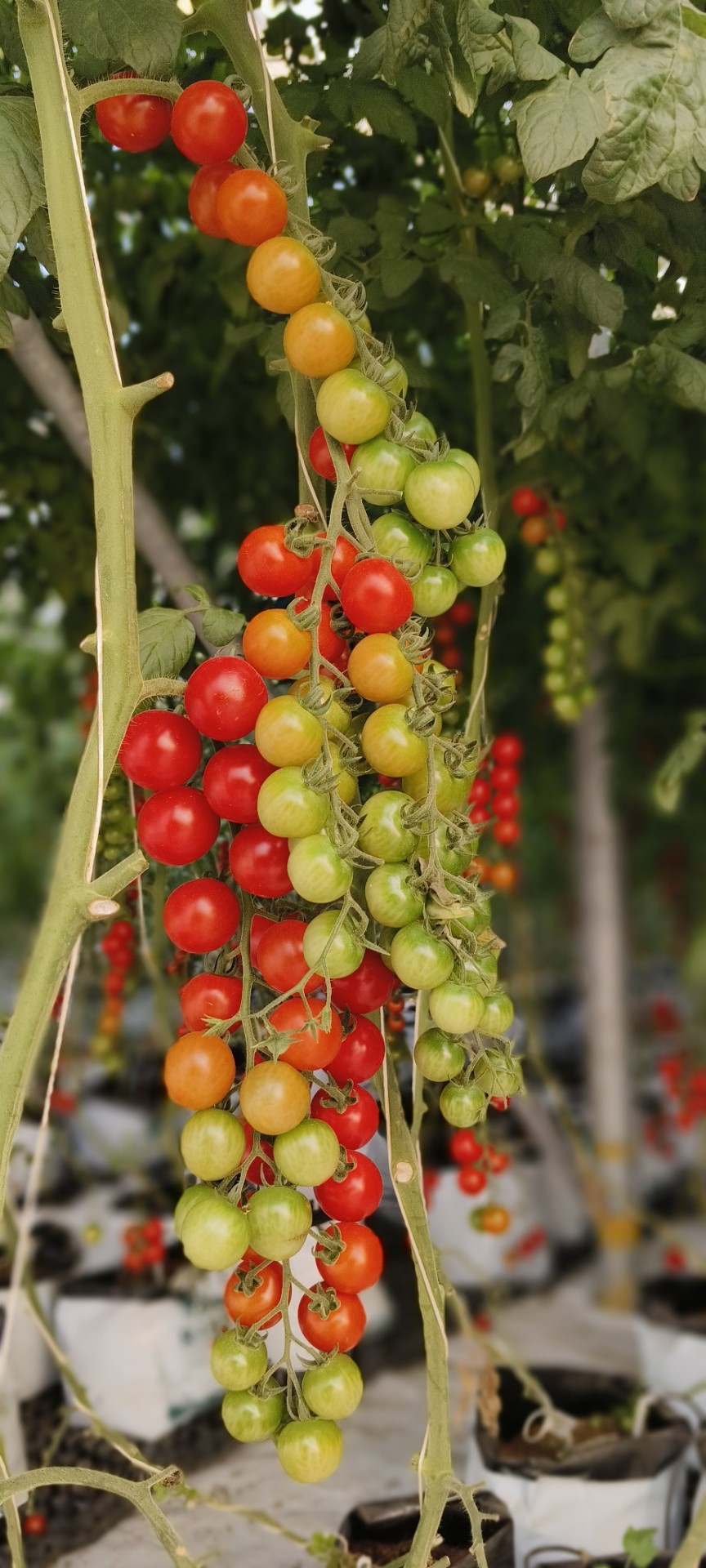#agribusiness
Text
Consider the fertilizer sector. The tripling of fertilizer prices in 2020-22 – which drove up food prices – was partly fueled by higher costs for nitrogen fertilizer, which reflected the rising price of natural gas. But new data from GRAIN/IATP show that leading firms hiked fertilizer prices well beyond what was needed to cover increased production costs, increasing their operating profits to 36%, even as they sold less product. The resulting profit ratios were three times higher than before the Ukraine war began, and well above the 13% average posted by S&P 500 firms.
Global grain traders have similarly been able to translate tighter supplies into record profits. In mid-2022, grain multinational Archer-Daniels-Midland (ADM) recorded its highest-ever quarterly profits. Its rival Cargill also banked record profits, with total revenues soaring by 23%.
Such profiteering is made possible by growing corporate concentration in the food and fertilizer sectors. ADM and Cargill are two of the four “ABCD” firms – along with Bunge and Dreyfus – that control an estimated 70-90% of the world grain market. Just four firms account for 75% of nitrogen-fertilizer production in the United States, and 72% of the potash-fertilizer market globally.
Through decades of mergers and acquisitions, such firms have been able to expand their influence up and down the supply chain, while amassing huge amounts of market data. Now, a proposed $34 billion merger between Bunge and Viterra – the grain arm of the commodity giant Glencore – would mean further concentration of soybean and canola processing and distribution across the Americas.
250 notes
·
View notes
Text

Rosemary helping me harvest watermelons 🍉 late at night haha
#tsuki odyssey#tsuki adventure#cottage aesthetic#cottagecore#cozy cottage#cottage moodboard#cute aesthetic#cozycore#cute#cottage vibes#watermelon#tsuki#rosemary#fields#harvest#agriculture#agribusiness
18 notes
·
View notes
Text
The U.S. Department of Agriculture’s Wildlife Services reported killing 375,045 native animals in 2023, according to recent data released by the program. The federal wildlife-killing program targets wolves, coyotes, cougars, birds and other wild animals, primarily to benefit the agriculture industry in states like Texas, Colorado and Idaho.
According to the report, the multimillion-dollar program last year intentionally killed 305 gray wolves, 68,562 coyotes, 430 black bears, 235 mountain lions, 469 bobcats, 2,122 red and gray foxes and 24,603 beavers. These figures almost certainly understate the actual number of animals killed, as program insiders have long lamented that Wildlife Services kills many more animals than it reports.
“I’m horrified by both the sheer number of animals killed by this federal agency and the immense suffering involved,” said Collette Adkins, carnivore conservation director at the Center for Biological Diversity. “It’s hard to even imagine the thousands of coyotes, beavers and other animals who die agonizing deaths from snares, traps or poisons.”
The reported number of native animals killed in 2023 was similar to the previous three years. These recent numbers reflect a steep decline compared to 2019, when approximately 1.3 million native animals were killed. The red-winged blackbird is an example of a species with fewer individuals intentionally killed by Wildlife Services, with 14,314 killed in 2023 compared to 364,734 in 2019.
According to the new data, the wildlife-killing program unintentionally killed more than 2,484 animals in 2023, including 658 river otters and 428 turtles, as well as several dogs and cats. Its killing of nontarget birds included a federally protected golden eagle, wood ducks, great blue herons and wild turkeys. Such data reveals the indiscriminate nature of leghold traps, snares, poisons and other methods used by federal agents.
Wildlife Services poisoned 6,543 animals using M-44 cyanide bombs in 2023. Of these deaths, 156 were unintentional. The Bureau of Land Management recently banned Wildlife Services from using these dangerous devices on the land it manages.
“Year after year, millions of dollars are wasted on killing wildlife instead of investing in long-term solutions that prevent conflicts,” said Adkins. “Taxpayer-funded wildlife slaughter lets livestock operators and the agriculture industry ignore problems that lead to conflict instead of fixing them. Wildlife Services should focus on implementing commonsense coexistence measures like cleaning up livestock carcasses that attract wolves and bears.”
#ecology#enviromentalism#let wolves live#wolves#coyote#cougars#black bears#mountain lion#bobcat#red fox#gray fox#beaver#wildlife#wildlife conservation#wildlife services#Fuck Wildlife Services#trapping#Poisoning#red winged blackbird#river otter#Turtles#dog#cat#industrial agriculture#agribusiness#cattle industry#ranching#Ranching lobby#hunting lobby#endangered species
5 notes
·
View notes
Note
A lot of the agriculture immigrants are employed to do is the stuff that's not really automatable due to the fact that the produce is delicate. Think tomatoes, berries, etc. However, this is primarily stuff that isn't staple crops, so it might not raise prices across the board as much as you'd expect. (And many things are imported from other countries anyway.)
Yeah, that's what I was wondering about with the citation needed.
6 notes
·
View notes
Text
youtube
You ready to be pissed off this Monday morning? Because holy shit
This week John is talking about farmworkers, who have basically none of the protections afforded to most of the labor force and in some cases, are being subjected to LITERAL slavery. This was absolutely awful to learn about but vital to know.
#john oliver#last week tonight#last week tonight with john oliver#agriculture#agribusiness#tw child labor#tw slavery#between this and the early bit on abortion this was the maddest I've seen john on show in a while#Youtube
32 notes
·
View notes
Text
“A nation that destroys its soils destroys itself.” — Franklin D. Roosevelt
Therese Coffey, the woman who brought 2.4million hours of undiluted raw sewage discharge into our waterways, now brings us 36 toxic chemicals used in farming.
One of the great advantages of having cast of the restrictive shackles of the European Union, is that the Tory Party is now free to poison us in the pursuit of profit.
The privately owned water companies have polluted our waterways and beaches and now landowners are being allowed to contaminate the countryside with dangerous chemicals.
“UK fails to ban 36 harmful pesticides outlawed for use in the EU.” (Guardian: 13/09/23)
Do not be mistaken in thinking that the farming industry is a collection of small family businesses. They do exist, but the aristocracy and big agribusiness are the biggest owners of farmland.
The Farmers Weekly recently described Britain’s agricultural resources thus:
“Land is a finite resource, offering relatively stable, long-term growth, hedging (limiting financial risk) and wealth preservation opportunities…Greater profitability and stability attracted investors, both domestic and foreign, to UK land, replacing some of the more traditional landlords such as royalty and the church.” (Who Owns Britain's Farmland: 17/01/23)
It is interesting to note that food production in not mentioned once in connection with farmland. It is all about long-term investment and profitability. According to Farming Forum, the aristocracy owns 30% of UK farming land, big corporations own 18%, tycoons own 17% and 17.5% of farmland ownership is “unknown”. “Individual homeowners” own only 5% of farmland.
Could it be that once farmland is seen as an investment opportunity rather than a means to produce and secure the nations food supply in an environmentally sustainable way, that the safe and long-term stewardship of the land becomes subservient to maximising profits at any cost?
Whatever the answer to that question is, Britain is now being described as “the toxic poster child of Europe” because of our controversial pesticide policies.
The first job of any government is to protect its citizens, yet Therese Coffey is allowing the use of chemicals that are directly harmful to human health. 12 of the chemicals being allowed are classified as carciogens and cause cancer. 9 of the chemical can cause human birth defects, developmental disorders and infertility. 8 of the chemicals can adversely affect reproductive function and development in both adults and children, and one of the chemicals being authorised by Coffey is classified as “acutely toxic”, meaning a single exposure can have detrimental health effects, usually within 24 hours of exposure. (See Pesticide Action Network UK: UK Falling behind EU pesticide standards; 13/09/23)
14 notes
·
View notes
Text
Karina Gonçalves David, a small-scale farmer representative from Brazil, is concerned by the presence of powerful and polluting firms. “If they are inside, they have an advantage. This place is about solutions to face the climate crisis but the companies are appropriating it to do lobbying. They are going the opposite way.”
The world’s top five meat companies’ emissions are estimated to be significantly larger than those of the oil firms Shell and BP, while the dairy industry’s 3.4% contribution to global human-induced emissions is a higher share than aviation.
Outspoken meat lobby groups are also on the ground in Dubai, including the North American Meat Institute, which as recently as 2022 claimed the extent of human-made climate breakdown was “unknown”.
Producers of pesticides have also turned out in high numbers this year, up 30% compared with 2022.
Together, Bayer, Syngenta, BASF and their trade association, CropLife, which has pushed back against attempts to enact new climate measures, sent 29 delegates.
Raj Patel, of the sustainability thinktank IPES-Food, said: “Just as with the influx of oil lobbyists, industrial agriculture businesses are scared. They have read the science and they know how much their business has driven the climate crisis.”
Big food and farming representatives are keen to steer conversations away from dietary change, which is under discussion at the summit. On Sunday, the UN’s Food and Agriculture Organisation will release the first draft of its plan for achieving a sustainable global food system, which is expected to call on rich nations to cut meat consumption.
This follows the recommendation of the Eat-Lancet Commission, which suggests people consume no more than 15.7 kg a year. In 2020, the average American consumed 126kg of meat.
Smallholder farmers are worried they will be sidelined by the power of the agribusiness lobby. A recent report showed small-scale producers get just 0.3% of international public climate finance despite producing a third of the world’s food.
Most corporations, lobby groups and NGOs that attend the Cop climate summits have “observer” status, but the analysis shows an increase in the number of industry representatives attending Cop28 with their national governments, making companies and lobby groups party to diplomatic negotiations.
Participating as country delegates, says Nusa Urbancic from the Changing Markets Foundation, means that industry may be perceived more as peers by policymakers who then give greater credibility to their positions.
The highest numbers of agribusiness representatives were brought in by Brazil, with 36 delegates linked mostly to the meat industry. Next in line was Russia, which handed out 15 passes to people affiliated with fertiliser companies and lobby groups, followed by Canada, which offered tickets to eight more delegates from fertiliser firms.
Fabrício Muriana, from Brazil’s Instituto Regenera, who is attending as an observer with the Global Alliance for the Future of Food, said: “They are here because they knew it would be a food Cop. It’s a cynical move because these people are not even beginning to scratch the surface of reducing harm, let alone addressing climate. We need stricter criteria on who is coming, and with what intentions.”
Big food companies have announced a handful of voluntary initiatives at Cop28. One is the UAE- and US-led Aim for Climate partnership, which has been criticised for skewing heavily towards techno-fixes and the commercial interests of large corporations.
The new analysis gives only a snapshot of the industrial agriculture sector’s influence. Agriculture and trade ministers, which fell outside the scope of the analysis, have been fierce advocates for the interests of agribusiness at UN events in recent years.
Government officials from Brazil and Argentina – both big producers of beef – pushed to water down scientific recommendations about reducing meat-eating in the latest IPCC report.
The US agriculture secretary, Tom Vilsack, a former dairy lobbyist, told industry groups before Cop28 that the US would use the summit to advocate for its market-based approach to agricultural policy, which shuns calls for regulation of industries such as meat and dairy.
#excerpts#cop28#lobbying#insider politics#fertilizer#agriculture#pesticides#agribusiness#climate change#environment
6 notes
·
View notes
Text
"the political inertia meant the EU was maintaining this system in the face of an environmental crisis. “We’re incentivising the worst-case scenario,” he said."
"we’re incentivising the worst case scenario"
"we’re incentivising the worst case scenario"
3 notes
·
View notes
Text
"Farming is not just a job; it's a way of life that nurtures both the land and the soul."
#agribusiness#agricoltura#agriculture#agritech#agrobisnis#business#crops#education#farmers#farming#fertilizers#organic fertilizer equipment
3 notes
·
View notes
Text
NUTRIFLAX
Nutriflax Granules are an innovation in Biotechnology Research. Nutriflax is a non-toxic, eco-friendly research based complete natural food for any crop. Nutriflax contains vitamins A, B, B2, C, Folic acid proteins like amino acid, humic acid and other enzymes and turmeric and probiotics makes product unique.
Benefits:
Early germination.
Vigorous seedling growth.
Profuse primary and secondary root development.
Increased soil microbial activity.
Higher nutrient uptake.
Better branching/tillering and increased foliage.
Reduction in the fruit and flower drop.
Better development of grains/fruits.
Increase in the size and weight of the grains/fruits.
Higher yield and better quality of the produce.
Crops:
For all the commercial crops
Agrifort Technologies
Facebook
Instagram
Youtube
What are Nutriflax Granules?
These granules when applied to soil release nutrients in plant rhizosphere thus stimulate growth of beneficial micro-organisms and provide nutritional support to plant at critical stages of growth. Nutriflax helps the plant against adverse climate condition and provide healthy overall growth of plant system, higher yields,pest & disease resistance. Manufacturing process through probiotic makes the products further unique.
#agribusiness#agritech#agriculture#education#health & fitness#business#nature#agricoltura#agrobisnis#farmers protest#farming#Farmers
3 notes
·
View notes
Text

New Diesel TracTracTors by International Harvester - 1939.
#vintage advertising#vintage illustration#tractors#vintage tractors#farming#farm equipment#vintage farm equipment#international harvester#farmers#agribusiness#agriculture
4 notes
·
View notes
Text







3 notes
·
View notes
Text
Slow-Released Fertilisers
Good morning!
It appears that the Indian tender is imminent, and the market has paused while awaiting further directions. Thank you for all your comments on my previous article about fertilisers.
While we wait for the DOА to send official invitations, I'd like to share some thoughts on slow-release fertilisers.
Yes, I believe that the consumption of mineral fertilisers could and should be decreased in favour of more sophisticated applications.
The Case for Slow-Release Fertilisers: Enhancing Crop Growth and Environmental Sustainability
In the world of modern agriculture, the choice of fertilisers plays a critical role in determining crop yield, soil health, and environmental sustainability. Among the various types of fertilisers available, slow-release fertilisers are gaining increasing attention for their numerous benefits.
Slow-release fertilisers, also known as controlled-release fertilisers, are designed to release nutrients to plants gradually over an extended period. This gradual release mechanism offers several advantages compared to traditional fertilisers:
1. Enhanced Nutrient Efficiency: Slow-release fertilisers deliver nutrients to plants in a more controlled manner, reducing the risk of leaching and runoff. This ensures that plants have a consistent supply of nutrients when they need them, promoting optimal growth and development.
2. Long-Term Nutrient Availability: Unlike conventional fertilisers, which may require frequent applications to maintain nutrient levels in the soil, slow-release fertilisers provide nutrients over an extended period. This reduces the need for frequent reapplication, saving both time and resources for farmers.
3. Environmental Protection: The controlled release of nutrients from slow-release fertilisers helps minimise nutrient loss to the environment. By reducing nutrient runoff and leaching, these fertilisers help protect water quality and prevent eutrophication of water bodies, which can have detrimental effects on aquatic ecosystems.
4. Reduced Environmental Impact: Slow-release fertilisers can contribute to a more sustainable agricultural system by reducing the overall environmental impact of fertiliser use. By minimising nutrient loss and runoff, these fertilisers help conserve resources and reduce greenhouse gas emissions associated with fertiliser production and application.
5. Cost-Effectiveness: While slow-release fertilisers may have a higher initial cost compared to traditional fertilisers, their long-lasting nutrient release can ultimately result in cost savings for farmers. With fewer applications required and reduced nutrient loss, farmers can achieve higher crop yields and lower input costs over time.
So, slow-release fertilisers offer a promising solution for enhancing crop productivity while promoting environmental sustainability in agriculture. By providing a more efficient and environmentally friendly alternative to traditional fertilisers, slow-release fertilisers have the potential to play a significant role in shaping the future of sustainable agriculture.
3 notes
·
View notes
Text
Agriculture Marketplace for Farmers
In the vast and ever-evolving landscape of agriculture, farmers find themselves at the heart of a dynamic marketplace that is continually shaping the future of food production. With technological advancements and changing consumer preferences, the agricultural marketplace has become more intricate, offering farmers a plethora of opportunities and challenges. This article explores the friendly terrain of the agriculture marketplace, highlighting how farmers can cultivate success in this modern era.
The Digital Dawn:
One of the most transformative developments in recent years is the advent of digital platforms designed to connect farmers with markets, suppliers, and technology. These user-friendly platforms empower farmers by providing them with real-time information on crop prices, weather forecasts, and innovative farming practices. From online marketplaces to mobile apps, technology has become an indispensable tool for farmers looking to optimize their operations and make informed decisions.
Seeding Innovation:
The agriculture marketplace is a fertile ground for innovation, with a variety of cutting-edge technologies designed to enhance productivity and sustainability. Precision farming, for example, allows farmers to tailor their approach to each individual crop, optimizing resources and minimizing environmental impact. Drones and satellite imagery enable farmers to monitor their fields with unprecedented precision, ensuring that crops receive the care they need. Embracing these innovations can not only boost yields but also contribute to a more sustainable and efficient agricultural ecosystem.
Market Access for All:
The modern agriculture marketplace is characterized by inclusivity, providing a platform for farmers of all sizes, from smallholders to large-scale operations. Online marketplaces and cooperatives facilitate direct connections between farmers and buyers, eliminating unnecessary intermediaries and ensuring fair prices for agricultural produce. This democratization of market access empowers smaller farmers to compete on a level playing field, fostering a more equitable and resilient agricultural industry.
Sustainable Practices:
As global awareness of environmental issues grows, consumers are increasingly seeking out sustainably produced food. Farmers are responding by adopting eco-friendly practices that not only benefit the planet but also enhance the marketability of their products. The agriculture marketplace is becoming a hub for sustainable initiatives, promoting practices such as organic farming, regenerative agriculture, and agroforestry. This shift towards sustainability not only meets consumer demand but also ensures the long-term viability of farming for future generations.
Collaboration and Knowledge Sharing:
In the friendly corridors of the agriculture marketplace, collaboration and knowledge sharing are key pillars of success. Farmers are joining forces in online communities, sharing experiences, insights, and best practices. This collaborative spirit extends beyond borders, creating a global network where farmers from different regions can learn from each other and collectively address challenges. By fostering a culture of collaboration, the agriculture marketplace becomes a supportive ecosystem that nurtures growth and resilience.
Conclusion:
The agriculture marketplace is undergoing a remarkable transformation, driven by technology, innovation, and a commitment to sustainability. For farmers, this presents a landscape rich with opportunities to thrive and cultivate success. By embracing digital tools, adopting sustainable practices, and engaging in collaborative efforts, farmers can navigate this friendly terrain with confidence, ensuring a bountiful harvest for generations to come.
2 notes
·
View notes
Text
Sitting here thinking about the old type of banana that isn’t around anymore because it got a disease that spread to all the other banana crops. More specifically I’m thinking about how agribusiness learned absolutely nothing about that and continues to grow monocrops which degenerate the soil, decrease variety within the species, and increase the likelihood of that happening again.
Thinking about bananas being clones of each other and how dystopian that is but God forbid we get a banana that isn’t shaped perfectly well or doesn’t appear to be vibrantly yellow and plastic looking.
Thinking about how the attempt to grow produce for aesthetics will inevitably result in an even narrower market of products than what is currently available.
The market is cornered and we’re going to either lose more species to disease because they aren’t allowed to evolve disease resistance, or farmers are going to sacrifice flavor for appearance and profit.
Honesty just fuck big agriculture. Fuck ag-gag laws, fuck the disappointment that is the current red delicious apple, fuck profit over planet, and God bless the Gros Michel banana.
#i hate it here#don’t even get me started on monocropping because I won’t shut the hell up#random thoughts with rowan#agriculture#agribusiness#environmentalism#save the planet
5 notes
·
View notes
Text

Agribusiness management aims to provide basic tools for the development of management and administration skills that support successful decision-making in companies, unions or organizations in the sector. Through the recognition of the fundamental factors that delay or accelerate the development process of the agribusiness in particular and the agricultural sector in general, from the problems of its competitiveness, its structure and its technological advance, the basic principles of management are addressed. as a system, its use and application in the pursuit of the goals and objectives of the agribusiness, guiding the use and management of the technical and economic instruments that at the company level enable efficient use and combination of the resources available in it, It seeks to train in management skills, innovation and entrepreneurship, thereby establishing possibilities of impact on the development of companies in the agricultural sector (agricultural and/or agroindustrial).
2 notes
·
View notes